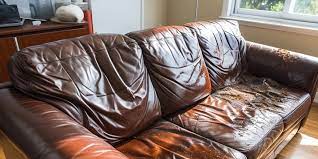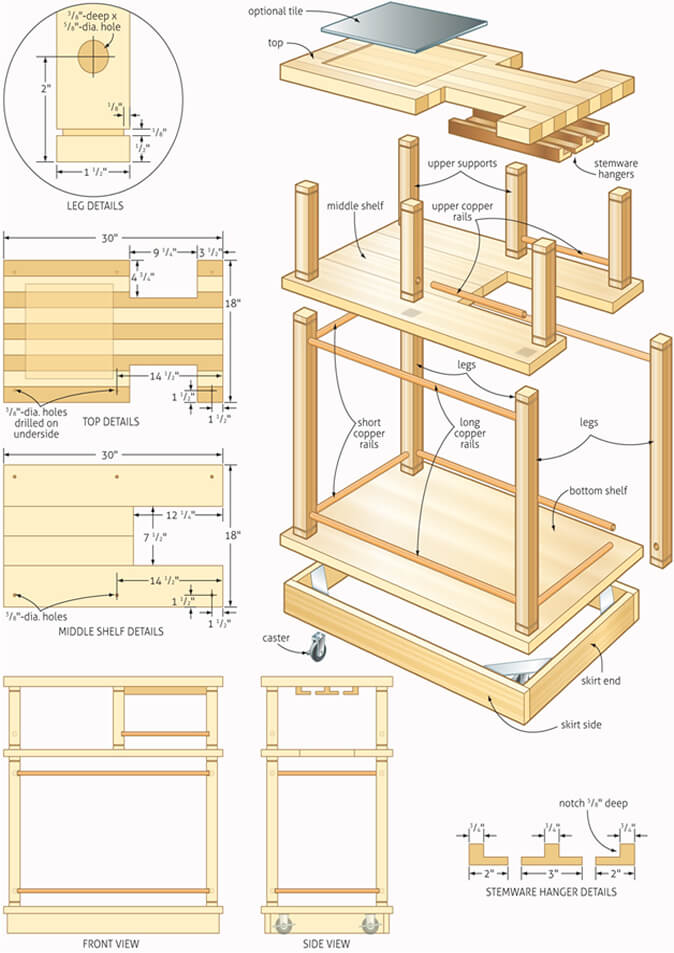There are many methods you can fix a peeling faux leather couch, including using interior latex paint or using a vinyl repair kit you can buy online or at an upholstery store. There are leather fillers you can buy to fill in the peeled areas and sand the repaired areas down until it’s smooth.
The most important room in a home is the living room, and the centerpiece is the couch. It can be discouraging to see your faux leather couch begin to crack and peel. We will look at how to fix a peeling faux leather couch in more detail so you can restore your couch in no time.
Fixing A Peeling Faux Leather Couch


For most people, buying a genuine leather couch is a goal, but they are expensive, so they buy a faux leather couch that looks great instead. After some time has passed, it will start to peel, so it’s important to know how to fix it. Here are some of the most helpful and successful methods.
Preparing Faux Leather Couch Before Fixing It
Before you can start repairing your faux leather couch is to prepare the peeling surface. You should use a vacuum to remove any debris, dust, or hair that might get stuck in the paint. Then you can remove all the loose pieces of faux leather from the couch.
You can do this by peeling them off or using small nail scissors to cut them off. Be careful not to cut the parts still attached to the couch, as it might cause more damage. To remove any tiny loose pieces at the edge, you can use a piece of fine sandpaper or an abrasive pad and lightly sand them off (use only enough pressure to remove all the edges).
Lastly, vacuum or sweep up all the big and small pieces of faux leather you have removed. Then take rubbing alcohol on a clean cloth and lightly wipe the couch clean. Avoid using too much, or it might dry out the faux leather. This step mainly cleans off any oils or stains that might stop the paint, repair kit leather filler, or glue from adhering properly.
Using Interior Latex Paint
You can use interior latex paint to repair a peeling faux leather couch. The latex creates a pliable, stretchy surface that will move and form around those sitting on the couch as the faux leather does. Buy good quality paint if you want the latex paint to last longer on your couch.
You can order latex paint in the same shade as your couch online or in an upholstery store. You might get a better selection of colors if you go to an upholstery store, or you can buy different colors or shades and mix it to get the shade of your couch.
Here are the items you will need to repair your peeling faux leather couch using latex paint and the steps you can follow.
- Latex paint
- A leather binder
- Leather conditioner
- Small paintbrush or small roller
- Fine grit sanding paper or abrasive pad
- Clean cloth
Step 1 – Applying The Binder
In this step, you need to apply the binder to the couch areas you are repainting. It will help the paint adhere more securely to the couch fibers. It also strengthens the fibers, so you won’t need to redo the entire process again in a few months. Apply two light coats of the binder, waiting for the first coat to dry before adding a second coat.
Step 2 – Applying The Latex Paint
You are now ready to paint the couch. It works best if you start at the back of the couch, dip the small paintbrush into the latex paint, and apply it to the couch. It’s vital to pay special attention to the seams of the couch so you end up with a seamless look when it’s dry.
If you find the paintbrush makes unattractive streaks, you can opt for a small roller instead, as it applies the paint more evenly.
Step 3 – Sanding The Repaired Areas
After letting the paint dry completely (it could take a few hours), you need to use a piece of fine grit sanding paper or an abrasive pad to smooth the areas you have painted. You may see that the sanding will reveal some of the backing material under the faux leather, but that is normal; it’s a part of the process. Be careful and avoid over-sanding the painted areas.
Use a cloth to remove the dust from the sanding and add another layer of leather binder to the painted and sanded areas.
Step 4 – Repeat The Steps
After the leather binder is dry, add another coat of paint to the couch. You must repeat steps 2-3 at least four times, remembering to wait between coats for the latex to dry completely before sanding and adding the leather binder.
The number of coats you have to apply will depend on how severely the couch surface is damaged. You should repeat these steps until you have a smooth surface that looks seamless and fits in with the rest of the couch.
Step 5 – Finish The Job
After adding the last coat of paint, you must not sand it as this is the top coat. When it has dried completely, you must use a leather conditioner on the whole couch. You can use a paste wax conditioner as well. The conditioner helps smooth out the paint and prevents it from getting sticky.
You use a clean cloth to add the conditioner to the couch and wait around 25 min for it to absorb into the couch. Then buff the couch’s surface with a dry cloth until the surface is shiny and the conditioner has blended with the couch.
Using Fabric And Vinyl Spray Paint
If you don’t want to use latex paint, you can use fabric and vinyl spray instead. There are only a few differences when you use this product instead of the paint. You use the same preparation method as you would with all the other methods.
Before spray painting, you may want to lay a tarp under the couch to protect the floor from the spray paint and add a primer like Gesso before spray painting (it may take up to a day for the primer to dry).
Once it has, you can follow steps 2-3, add a few layers of spray paint, and use the primer instead of the leather binder until you have a smooth surface; then follow step 5 and use the leather conditioner to protect the couch.
Using A Vinyl Repair Kit
If you have opted to use a vinyl repair kit instead of latex paint, this section is for you. Some kits say leather and vinyl repair kits, which are fine to use on faux leather. These kits are easy to buy online or in fabric stores, but the colors are limited.
The kits usually come with patches, a binder, filler, a cleaning solution, a stiff paintbrush, and the colorant. Some kits don’t come with a paintbrush, so you need to buy a small paintbrush.
Remember to prepare the couch before you start using the repair kit, as mentioned in the second section of this post. If you don’t prepare the couch, the repairs won’t last and won’t look good.
Here are the supplies you will need, followed by steps you can take to use the vinyl repair kit.
- The vinyl repair kit or two if you have more than one couch to repair,
- Small paintbrush or roller (if it’s not included),
- Clean cloth,
- Hot iron as these kits set using heat,
Step 1 – Mixing The Colors
In the repair kit, you will find the colors you need to mix to get the same color as your couch. If there are no empty mixing containers, use a small dish or plastic container you can throw away when you’re done. Most kits have a color mixing chart to help you get as close to your couch color as possible.
Step 2 – Painting The Peeled Areas
Next, you use the paintbrush to apply the paint you mixed to the peeled areas. Ensure that you overlap the paint on the edges by a few millimeters to help the repair seal better.
Step 3 – Use The Relief Paper
If your kit comes with textured relief paper, you can use it to give the repair a similar texture to that of your couch, so it blends in better. You could skip this step if your kit did not come with this textured paper.
Step 4 – Heat The Area
Most of these kits are heat-sealed, and you will need a small iron or heating tool to seal the repair to the couch. A heating tool works best as it has a small (so manageable) flat disc-shaped end that you can heat using an iron. If you only have an iron, set it to cotton (no steam setting).
Press the heat tool against the textured paper to engrain the texture onto the couch and seal the repair. Move the tool around to distribute the heat evenly over the repair. If you use an iron, only use the tip of the iron and lift the remaining part of the iron away from the couch.
Step 5 – Repeat If Needed
After you are done, slowly peel the textured paper away and check the repair; if the damage still shows, you can repeat steps 2-4 until you are happy with the result.
Using A Leather Filler
You can buy the right color filler online or at a fabric store if you want to use a leather filler. It is a longer and more labor-intensive option. The filler is the consistency of margarine but will dry to a pliable texture similar to that of faux leather. Prepare the couch as stated in the second section of the post.
Here are the supplies you will need when using a leather filler and the steps to applying it to repair your peeling couch.
- Correct color filler,
- Putty knife,
- A dry cloth,
- Fine grit sanding paper,
- Leather binder,
- Plastic wrap.
Step 1 – Apply The Filler
Take a putty knife and add small amounts of the filler to the areas that need repairs. Don’t add too much at a time. If you have added too much, you can wipe it away with a dry cloth before it cures. Thin out the sides to blend in with the faux leather, but don’t let some of the filler touch the areas that are still intact.
Step 2 – Wait And Repeat
Next, you need to allow the filler to dry completely. It takes around 40 minutes. After it is dry, sand the area lightly and repeat the first step. (don’t sand the second coat if it’s smooth)
Step 3- Dry And Texture
Lastly, let the second coat dry almost completely, take a piece of crinkled plastic wrap, and press it to the repaired areas to create a texture similar to the rest of the couch.
Step 4 – Apply Leather Binder
After the repairs have set, you can use a leather binder on the couch to help the repairs last longer.
Conclusion
There are many ways to repair a peeling faux leather couch, including a repair kit, latex spray or paint, and leather filler. Remember, these are only temporary, and they will need to be redone as time passes, but with care, you can extend the life of your faux leather couch.

